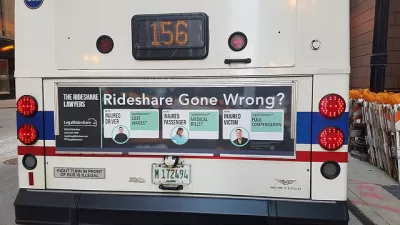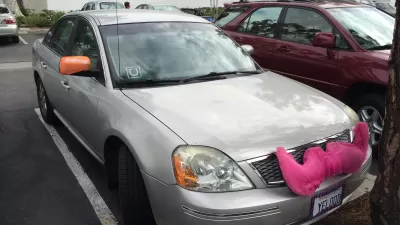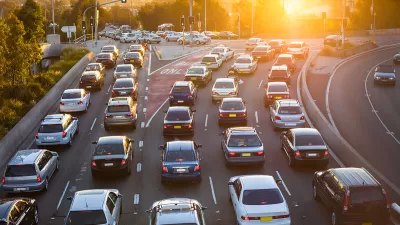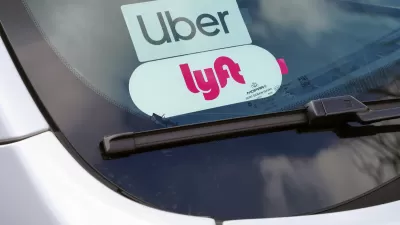Past studies have shown how ride hailing services have added to congestion. A new study by Bruce Schaller suggests that even ride shares add to traffic, because they pull riders off of more efficient transit options like public transit.

Studies have shown ride hailing services add to traffic, but a new data from transport consultant Bruce Schaller goes further showing that even shared rides are adding to traffic. "Pooled ride services have lured a different market that directly competes with subway and bus systems, while failing to achieve significantly better efficiency than their solo alternatives. The result: more driving overall," Faiz Siddiqui reports for The Washington Post.
Ride share companies have long argued that they're getting cars off the roads, because their customers forgo their cars and take the occasional Lyft or Uber instead, but research has shown that isn't the case. In fact, Uber drivers end up spending more time on the road than private car owners, because they spend time driving between rides or cruising, waiting for a ride to appear. "Deadheading" between rides accounts for about half of the miles driven in these services.
Analysts believe ride share miles will continue to increase. "Ride sharing has added 5.7 billion vehicle miles to nine major urban areas over six years, the report says, and the trend is “likely to intensify” as the popularity of the services surges," Siddiqui writes.
FULL STORY: A new study says services like UberPool are making traffic worse

Planetizen Federal Action Tracker
A weekly monitor of how Trump’s orders and actions are impacting planners and planning in America.

Restaurant Patios Were a Pandemic Win — Why Were They so Hard to Keep?
Social distancing requirements and changes in travel patterns prompted cities to pilot new uses for street and sidewalk space. Then it got complicated.

Map: Where Senate Republicans Want to Sell Your Public Lands
For public land advocates, the Senate Republicans’ proposal to sell millions of acres of public land in the West is “the biggest fight of their careers.”

Maui's Vacation Rental Debate Turns Ugly
Verbal attacks, misinformation campaigns and fistfights plague a high-stakes debate to convert thousands of vacation rentals into long-term housing.

San Francisco Suspends Traffic Calming Amidst Record Deaths
Citing “a challenging fiscal landscape,” the city will cease the program on the heels of 42 traffic deaths, including 24 pedestrians.

California Homeless Arrests, Citations Spike After Ruling
An investigation reveals that anti-homeless actions increased up to 500% after Grants Pass v. Johnson — even in cities claiming no policy change.
Urban Design for Planners 1: Software Tools
This six-course series explores essential urban design concepts using open source software and equips planners with the tools they need to participate fully in the urban design process.
Planning for Universal Design
Learn the tools for implementing Universal Design in planning regulations.
Heyer Gruel & Associates PA
JM Goldson LLC
Custer County Colorado
City of Camden Redevelopment Agency
City of Astoria
Transportation Research & Education Center (TREC) at Portland State University
Camden Redevelopment Agency
City of Claremont
Municipality of Princeton (NJ)





























